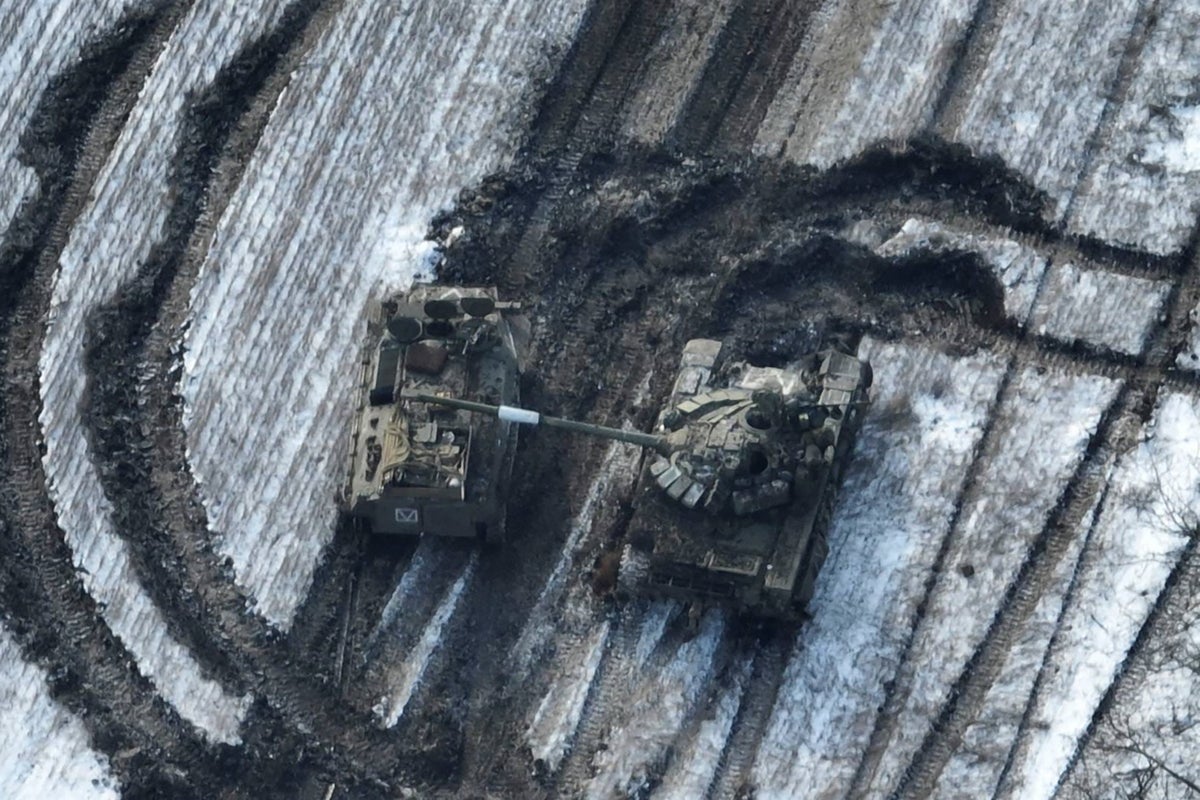
Russia is estimated to have lost almost half of its best tanks during its invasion of Ukraine, with Vladimir Putin’s troops stepping up attacks in the country’s eastern regions including Donetsk and Luhansk.
The assessment, from military think tank the International Institute for Strategic Studies (IISS), suggests that Moscow's pre-invasion fleet of modern T-72B3 and T-72B3M main battle tanks has been hit particularly hard, with a loss rate of up to 50 per cent. The director general of the IISS, John Chipman, said that Moscow has been forced “to rely on its older stored weapons” thanks to production of the newer models being “slow”. That means falling back on its Soviet-era tanks.
“They’re producing and reactivating nowhere near enough to compensate for those loss rates. Their current armoured fleet at the front is about half the size it was at the start of the war,” said Henry Boyd, research fellow at the IISS. The broader loss rate across all models of tank is thought to be around 40 per cent, the IISS said in its annual Military Balance report.
It comes as Russian forces claimed to have broken through two fortified Ukrainian defence lines on the eastern front, with Kyiv describing conditions there as “difficult”. The Russian Defence Ministry said the Ukrainians had retreated in the face of Russian attacks in the Luhansk region, but did not say exactly where. Luhansk and neighbouring Donetsk make up what is known as the Donbas, Ukraine’s industrial heartland, which Russia is keen to control.
Ukrainian president Volodymyr Zelensky’s office said Ukrainian forces had repelled some Russian attacks in Luhansk, but added: “The situation in the region remains difficult.” Luhansk regional governor Serhiy Haidai said Russia was pouring heavy equipment and mobilised troops into Luhansk.
“The attacks are coming from different directions in waves,” Mr Haidai said. “[But] those who spread the information that allegedly our defence forces have pulled back beyond the line of the administrative border [of Luhansk] – this does not correspond to reality.”
Serhiy Cherevatyi, a spokesperson for Ukraine’s eastern military command, told Ukrainian TV on Wednesday that fierce battles were being fought in Bakhmut, a city in Donetsk where a significant amount of Russian firepower has been concentrated. Bakhmut’s capture would give Russia a stepping stone to advance on two bigger cities, Kramatorsk and Slovyansk.
Mr Zelensky said that his government believes Russia was in a hurry to achieve as much as it could with its latest push before Ukraine gathers strength for what many expect to be a spring counteroffensive.
Meanwhile, the UK’s defence secretary, Ben Wallace, said that Russia had not been able to amass a single force strong enough to “punch through” Ukraine’s defences.
“Putin’s land forces are in a dire state. It will leave him the options of what he does with his air force and his navy – which are not as remotely as badly affected,” he told BBC Radio 4’s Today programme. “We now estimate 97 percent of the Russian army, the whole Russian army, is in Ukraine,” added Mr Wallace, explaining that there had been a “very, very high” attrition rate among Russian troops and that “potentially their combat effectiveness [has been] depleted by 40 per cent”. Further, he said, nearly two-thirds of their tanks are thought to have been “destroyed or broken”.
The UK also announced that Ukraine will receive support including artillery ammunition, maritime intelligence, surveillance and reconnaissance equipment, and spare parts for Ukraine’s current tanks, via the first package of funding from the International Fund for Ukraine (IFU). The first equipment package was agreed by the UK, Netherlands, Norway, Sweden and Denmark, and is worth more than £200m.
Meanwhile, on the second day of meetings between Western defence chiefs in Brussels, European Union foreign policy chief Josep Borrell urged countries to join Germany in sending “as many tanks as possible, and as quickly as possible” to Ukraine. “I know there are hundreds of tanks in EU armies; some of them need to be refurbished, but then you have to do it, and do it quickly, because in the spring it will be too late,” he said.
The US defense secretary, Lloyd Austin, said after the Brussels talks that Ukraine had a very good chance of taking and “exploiting” the initiative on the battlefield this year. Mr Austin said that for every new system Nato provides to Kyiv, it will train troops to use it. “We’re laser-focused on making sure that we provide a capability and not just the platform,” he said.
Reuters contributed to this report







